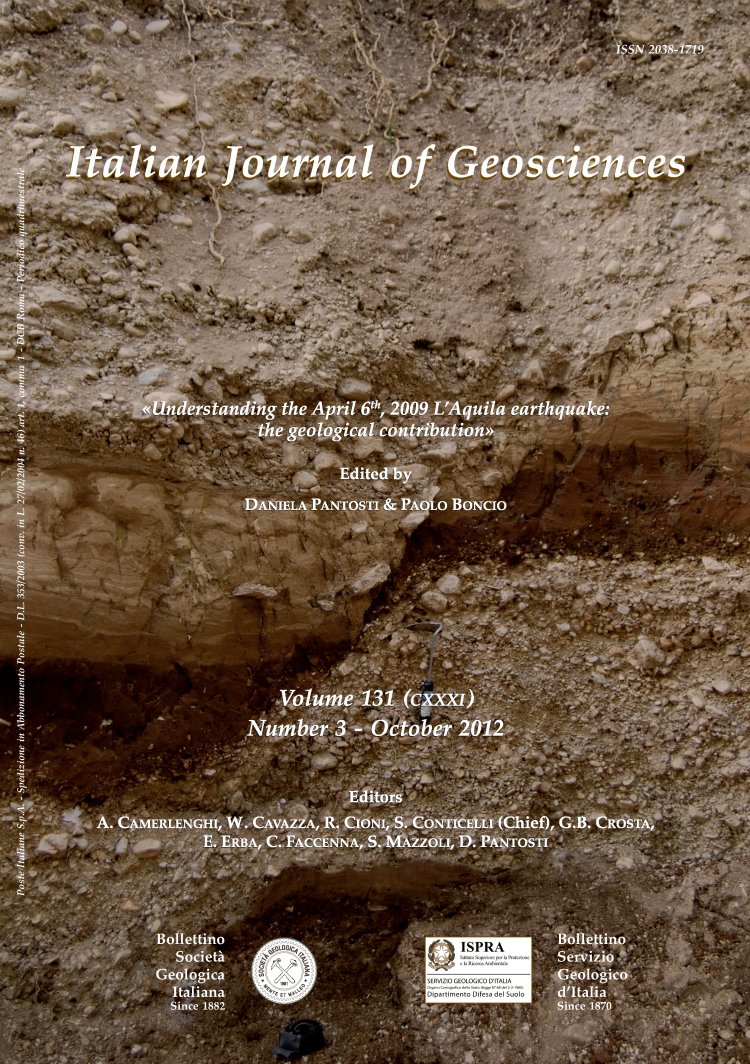
Soil gas degassing during the 2009 L'Aquila earthquake: study of the seismotectonic and fluid geochemistry relation
Nunzia Voltattorni(*), Fedora Quattrocchi(*), Andrea Gasparini(*) & Alessandra Sciarra(*)
(*) Istituto Nazionale di Geofisica e Vulcanologia, Via di Vigna Murata, 605 - 00143 Rome (Italy). Corresponding author: nunzia.voltattorni@ingv.it
Volume: 131 (2012) f.3
Pages: 440-447
Abstract
A Mw 6.3 earthquake occurred on April 6, 2009 in the Abruzzo region (Central Italy), close to the city of L'Aquila. The aftershock area extended to a length of more than 35 km that includes major aftershocks and thousands of minor events. The earthquake ruptured North-West (NW)-South-East (SE) oriented normal fault dipping toward the South-West (SW), with the city of L'Aquila lying a few kilometers away on the hanging wall.
A soil gas survey (CO2 and CH4 flux measurements, soil gas measurements and collection) has been carried out in an area of 24 km2 (few kilometers far from L'Aquila city) to investigate the gasbearing properties of local seismogenic faults (Paganica, Bazzano, and Monticchio-Fossa faults) and to locate fracture systems when masked by unconsolidated lithologies. Anomalous values of Rn and CO2 were detected both east of Bazzano fault and in the central part of the investigated area where faults have no surface expression.
Highest values of He and CH4 concentrations prevail in the southern sector in correspondence with Onna village located between Fossa and San Gregorio faults. Results of this research provide some clues on the spatial influence of active tectonic on gas migration toward the surface.
Keywords
Get Full Text